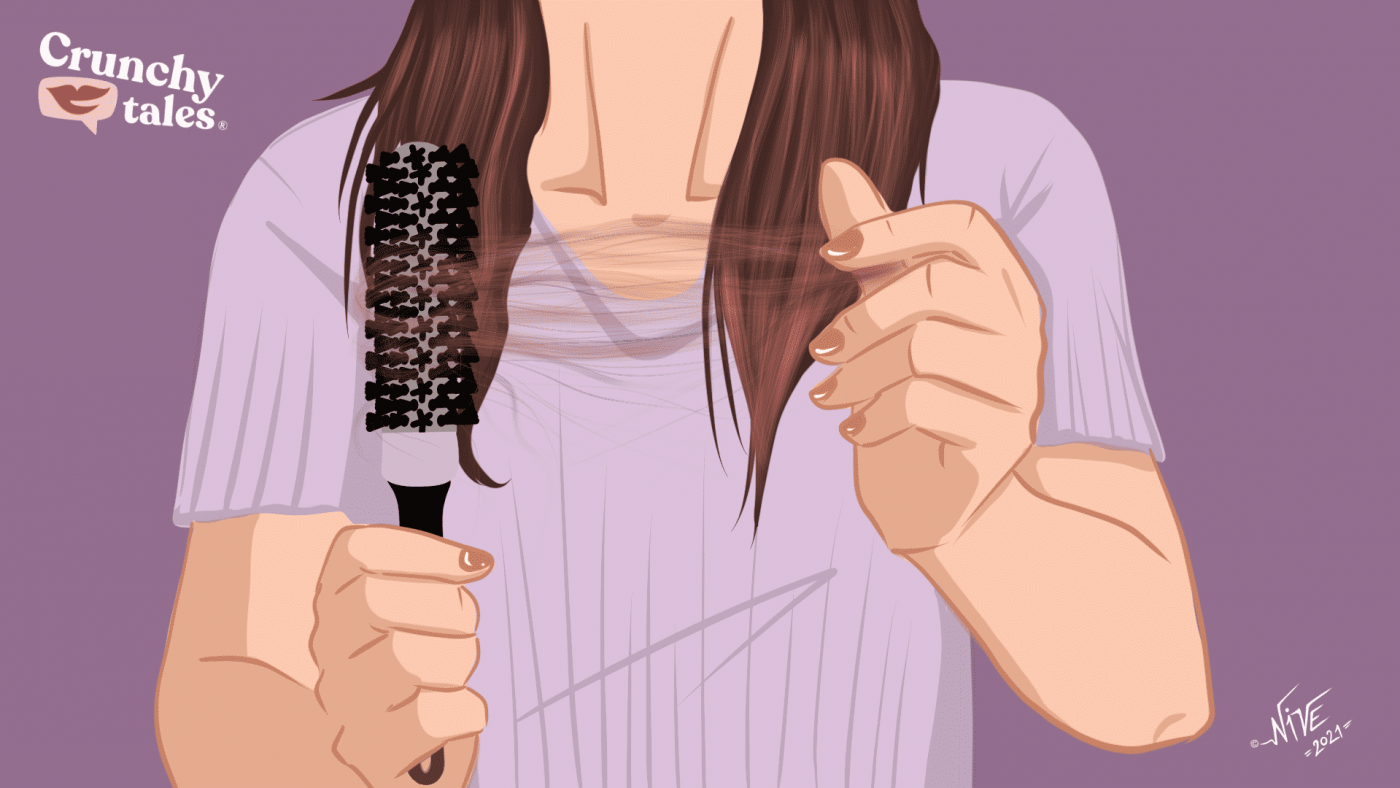Hair Loss in Your 50s: What You Need To Know To Fix It
Having full-bodied glossy hair is the dream of every woman. But, the truth is that regardless of your hair type, grey and thinning strands are part of the ageing process. Normally, we can lose between 50 and 100 hairs a day, often without notice, however, if you start to see more strands than usual left on your brush, the parting in your hair is getting wider and you find bald spots, it’s time to see a dermatologist and maybe consider a new haircut.
According to Cleveland Clinic experts, menopause is a big player in the matter. Hair loss during this stage of life is the result of lowered production of oestrogen and progesterone that interfere with the usual hair growth cycle. This is the main reason why your strands become much thinner and less in number. However, once you’ve ruled out any medical condition, nothing should stop you to improve your lifestyle in order to prevent more damage. Stress, poor diet, smoking, chemical treatments as well as thyroid imbalance, low iron and vitamin D can lead to hair loss, too.
But before you despair, there are steps you can take to strengthen and repair your hair. Take note of the following tips for reducing the problem.
Mind you diet
A good diet for healthy locks should include a palm-sized amount of protein at every meal, plenty of fruit and vegetables, omega-3s (found in oily fish, nuts and seeds, and dark green leafy vegetables), complex carbs like wholegrain bread, beans and oats, and starchy vegetables like potatoes and parsnips. Supplements – especially ones containing iron, vitamins C, B12 and B6- can also help. Saw palmetto (SP), a botanical extract with antiandrogenic properties, has gained commercial popularity for its purported benefits on hair regrowth, too.
Enjoy a regular scalp massage
Massaging your head, like when you are washing your hair, can stimulate blood flow to the scalp and hair follicles. By moving your fingertips in a slow, circular movement around this area, you might feel regenerated and promote hair regrowth at the same time. Add a few drops of essential oils such as lavender, lemongrass, and peppermint to enhance your massage’s effectiveness.
Manage your stress
Stress has been a known link to inflammation in the body and immunity issues, and apparently, these factors are linked to hair loss as well. This type of sudden hair loss is reversible and temporary if your stress levels and overall health return back to normal in a timely matter. However, know that prolonged episodes of these can eventually cause permanent damage to your follicles. Through yoga, mindfulness or regular walks in the park, you will be able to manage difficult times without impacting on your strands too much.
Avoid aggressive treatments
Heat is always hard on hair. It causes brittle hair that breaks and falls out. Try to let your hair dry naturally as often as possible and when you do use styling tools, make sure to use a heat-protecting spray that will lessen the damage the tools are inflicting on your hair. Also, be wary of chemical processing like bleaching or hair lighting because ammonia used in these treatments may cause hair loss. Ask your stylist about alternatives, like organic hair dyes and others that don’t contain ammonia, peroxide, or para-phenylenediamine (PPD). Avoid hairstyles that pull on the hairline, such as tight ponytails, cornrows or braids, too.
Consider a topical medication
If hair growth serums don’t work, try Minoxidil. The active ingredient in Rogaine, is an over-the-counter medication that can be applied to the hair in liquid or mousse form. The medication works by stimulating the hair follicles and promoting regrowth. However, it is not a miracle drug. While it can produce some new growth of fine hair in some — not all — women, it can’t restore the full density of the lost hair. It’s not a quick fix, either for hair loss in women. You won’t see results until you use the drug for at least two months.
Like this post? Support Us or Sign up to our newsletter to get more articles like this delivered straight to your inbox!





